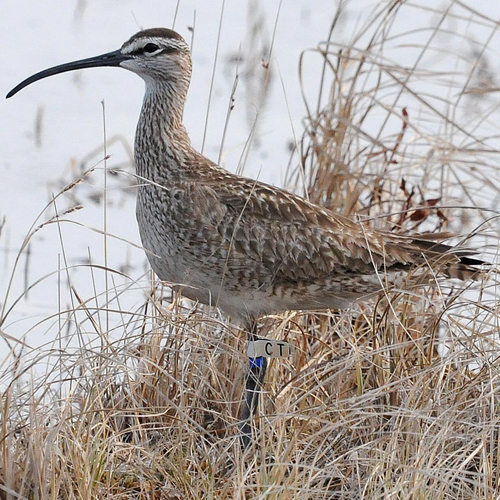General Description
Whimbrels are large shorebirds with long, decurved bills. They are smaller in size than the similar-looking Long-billed Curlew, and their bills are shorter. The Whimbrel has a distinct head pattern, with dark-and-light alternating stripes. The rest of its plumage is plain mottled-brown overall, and does not vary season to season. In flight, it appears brown all over, with a white belly. Its bill is solid black in summer and has a pinkish or reddish base during winter.
Whimbrel's are Uncommon in Western Washington from April,May August,September.Habitat
Whimbrels nest in the tundra, not far from the tree line, in a variety of open habitats from wet lowlands to dry uplands. During migration, they use wetlands, dry, short grasslands, farmland (especially plowed fields), and rocky shores. During winter, they are mostly found in coastal areas, on exposed reefs, sandy or rocky beaches, estuaries, and especially mudflats.
Behavior
In spring, Whimbrels may congregate in farmlands in groups of up to several hundred. They probe into the mud for their food, and pick food from the surface more often than do other curlews. Whimbrels feed singly or in small groups on mudflats at low tide. Then at high tide, they gather and roost in dense flocks, often flying long distances between roosting and feeding areas.

No comments:
Post a Comment